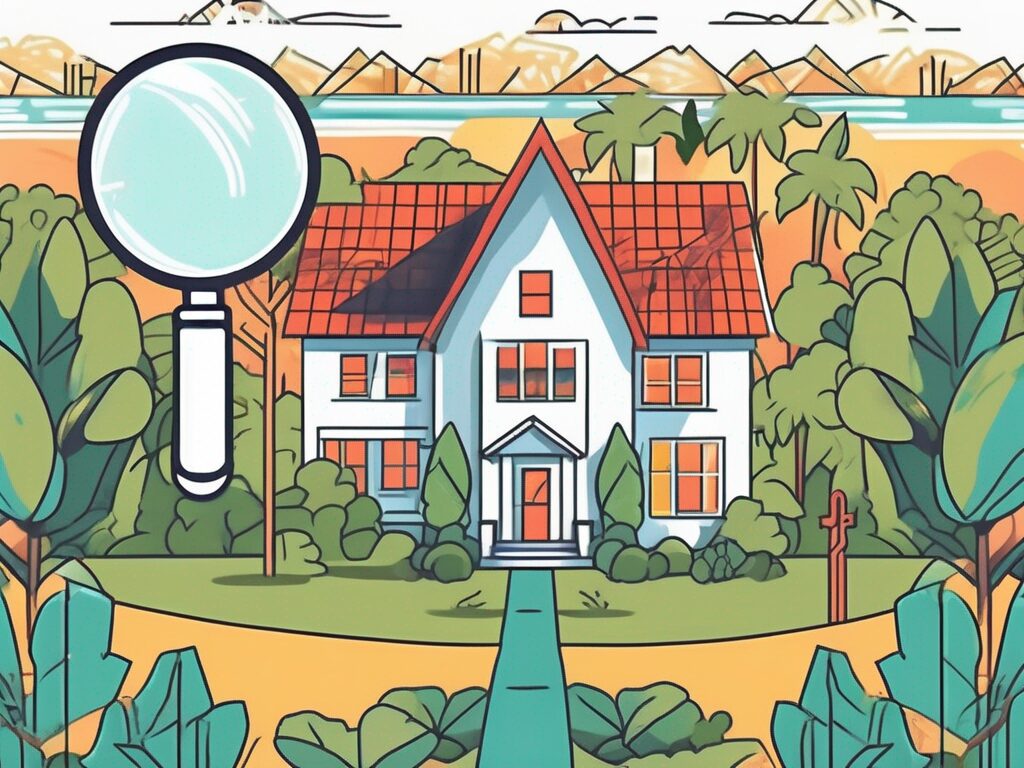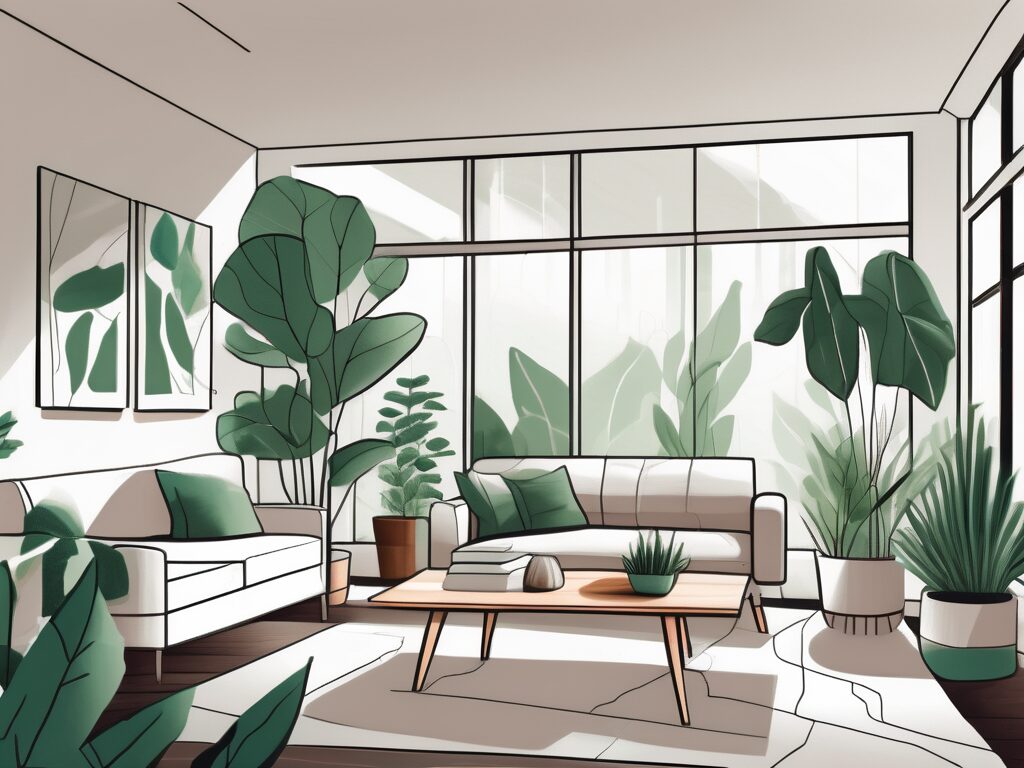
Agent A-Team or Solo Superhero? Finding the Right Real Estate Partner for Your Selling Journey in Wildwood Florida
When it comes to selling your home in Wildwood, Florida,…
January 29, 2024
Sustainable interior design is more than just a trend. It is a concept that promotes responsible and eco-friendly practices in the world of interior design. By integrating sustainable principles into our living spaces, we can create healthier environments, reduce our carbon footprint, and contribute to the overall well-being of the planet. In this comprehensive guide, we will explore the various aspects of sustainable interior design and its importance in today’s world.
Before we delve into the importance of sustainable interior design, it is crucial to address some common misconceptions surrounding this concept. One such myth is that sustainable design compromises aesthetics and style. In reality, sustainable interior design can be just as visually appealing and innovative as traditional design approaches. With advancements in technology and the availability of eco-friendly materials, designers can create stunning spaces that are both sustainable and stylish.
Contrary to popular belief, sustainable interior design does not limit creativity but rather encourages it. Designers have a wide range of eco-friendly materials and techniques at their disposal, allowing them to experiment and push boundaries while still prioritizing sustainability. From reclaimed wood and salvaged materials to low-VOC paints and organic fabrics, there are countless options for creating beautiful and environmentally conscious interiors.
Moreover, sustainable interior design goes beyond aesthetics and style. It encompasses a holistic approach to creating spaces that are not only visually pleasing but also promote the well-being of occupants. By considering factors such as indoor air quality, natural lighting, and ergonomic furniture, sustainable design aims to enhance the health and comfort of people living or working in these spaces.
Now that we have debunked the misconceptions, let’s explore why sustainable interior design is so important. Firstly, it helps conserve natural resources by promoting the use of recyclable and renewable materials. By opting for sustainable materials such as bamboo flooring or recycled glass countertops, we can significantly reduce the demand for non-renewable resources.
Additionally, sustainable interior design plays a crucial role in waste reduction. Through practices like recycling, upcycling, and repurposing, designers can minimize the amount of waste generated during the construction and renovation process. This not only reduces the strain on landfills but also contributes to a more circular economy.
Secondly, sustainable interior design is crucial for minimizing our carbon footprint. By choosing energy-efficient lighting and appliances, implementing effective insulation, and utilizing renewable energy sources, we can significantly decrease our energy consumption and contribute to a greener future.
Furthermore, sustainable design promotes the use of locally sourced materials and products, reducing the environmental impact associated with transportation. By supporting local artisans and manufacturers, we can stimulate the local economy while also reducing greenhouse gas emissions caused by long-distance shipping.
Lastly, sustainable interior design has a positive impact on human health and well-being. By prioritizing indoor air quality, designers can create spaces that are free from harmful pollutants and toxins. This is particularly important considering that indoor air pollution can have severe health effects, including respiratory issues, allergies, and even cancer. Sustainable design also emphasizes the use of natural light and biophilic elements, which have been proven to enhance mood, productivity, and overall well-being.
Sustainable design is a concept that has gained significant traction in recent years, and for good reason. Not only does it contribute to a healthier environment, but it also has a profound impact on the real estate market. In this article, we will delve deeper into how sustainable design can increase property value and why buyers are increasingly prioritizing eco-friendly features in their search for the perfect home.
The benefits of sustainable interior design extend beyond environmental consciousness; they also have a positive impact on real estate. Research has shown that homes with eco-friendly features tend to have higher resale values. Buyers are increasingly valuing properties that promote energy efficiency, healthy indoor air quality, and sustainable practices.
When it comes to energy efficiency, sustainable design incorporates various elements that reduce energy consumption and lower utility costs. These features can include solar panels, energy-efficient appliances, and proper insulation. Not only do these additions benefit the environment by reducing carbon emissions, but they also save homeowners money in the long run. The prospect of lower energy bills is an attractive selling point for potential buyers, making sustainable homes more desirable and increasing their market value.
In addition to energy efficiency, sustainable design also prioritizes healthy indoor air quality. Traditional building materials and furnishings often release harmful chemicals into the air, negatively impacting the health of occupants. Sustainable homes, on the other hand, utilize non-toxic materials and proper ventilation systems to ensure clean and fresh indoor air. This focus on indoor air quality is particularly appealing to buyers who prioritize their well-being and seek a home that promotes a healthy lifestyle.
Furthermore, sustainable practices such as water conservation and waste reduction are becoming increasingly important to buyers. Sustainable homes often incorporate features like low-flow toilets, rainwater harvesting systems, and efficient irrigation systems. These practices not only reduce water consumption but also contribute to a more sustainable and eco-friendly lifestyle. Buyers who are conscious of their environmental impact are willing to pay a premium for homes that align with their values, further driving up property values.
It is worth noting that the demand for sustainable homes is not limited to a niche market. As environmental concerns continue to grow and people become more aware of the impact of their choices, the demand for eco-friendly properties is on the rise. Real estate developers and investors are recognizing this trend and incorporating sustainable design principles into their projects to meet the increasing demand. This shift in the market dynamics further solidifies the notion that sustainable design is not just a passing trend but a long-term investment with significant financial benefits.
In conclusion, sustainable design is revolutionizing the real estate industry. The incorporation of eco-friendly features not only benefits the environment but also increases property value. From energy efficiency to healthy indoor air quality and sustainable practices, buyers are increasingly prioritizing these elements when searching for their dream home. As the demand for sustainable homes continues to rise, the market is responding by offering more options that align with these values. So, if you are looking to invest in real estate or sell your property, considering sustainable design can be a wise decision that pays off in the long run.
Sustainable interior design prioritizes the health and well-being of occupants. It involves considering factors such as indoor air quality, natural lighting, and the use of non-toxic materials. By incorporating these elements into our living spaces, we can create healthier environments that promote physical and mental well-being.
Indoor air quality plays a crucial role in our overall health. Traditional building materials, such as paints, adhesives, and carpets, often release harmful volatile organic compounds (VOCs) into the air. These VOCs can cause respiratory problems, allergies, and even contribute to long-term health issues. Sustainable design aims to minimize the use of such materials and instead focuses on utilizing low-VOC or VOC-free alternatives. By doing so, we can ensure that the air we breathe indoors is clean and free from harmful pollutants.
Natural lighting is another important aspect of creating a healthy indoor environment. Exposure to natural light has been proven to have numerous benefits, including boosting mood, enhancing productivity, and regulating our sleep-wake cycle. Sustainable design incorporates strategies to maximize natural light within a space, such as using large windows, skylights, and light-colored surfaces that reflect and distribute sunlight. By harnessing the power of natural light, we can create spaces that are not only visually appealing but also contribute to our overall well-being.
When it comes to selecting materials for sustainable interior design, the focus is on using non-toxic and environmentally friendly options. Conventional materials, such as certain types of paints, flooring, and furniture, often contain harmful chemicals that can off-gas and negatively impact our health. Sustainable design promotes the use of eco-friendly materials, such as low-emission paints, recycled or reclaimed wood, and organic fabrics. These materials not only reduce our exposure to toxins but also help minimize our carbon footprint and support a healthier planet.
In addition to these key elements, sustainable design also considers other factors that contribute to the overall well-being of occupants. This includes incorporating biophilic design principles, which aim to connect people with nature by integrating natural elements, such as plants, water features, and natural textures, into the built environment. Research has shown that exposure to nature has a positive impact on our mental health, reducing stress and enhancing creativity. By bringing nature indoors, sustainable design creates spaces that are not only aesthetically pleasing but also contribute to our overall sense of well-being.
Furthermore, sustainable design takes into account the importance of proper ventilation and thermal comfort. Good ventilation helps remove indoor air pollutants and maintain a fresh and healthy environment. It also plays a crucial role in preventing the buildup of moisture, which can lead to mold growth and other respiratory issues. Additionally, sustainable design aims to create spaces that are thermally comfortable, ensuring that occupants can maintain a comfortable temperature without excessive reliance on heating or cooling systems. By prioritizing ventilation and thermal comfort, sustainable design supports the health and well-being of occupants while also reducing energy consumption.
In conclusion, sustainable interior design goes beyond aesthetics and focuses on creating healthy indoor environments that promote the well-being of occupants. By considering factors such as indoor air quality, natural lighting, non-toxic materials, biophilic design, ventilation, and thermal comfort, sustainable design ensures that our living spaces contribute to our physical and mental health. Embracing sustainable design principles not only benefits individuals but also helps create a more sustainable and healthier future for all.
One of the most exciting aspects of sustainable interior design is the innovative solutions that designers are coming up with. From vertical gardens that purify the air to furniture made from upcycled materials, there are endless possibilities for creating sustainable and visually stunning spaces. These inspiring examples showcase the potential of sustainable interior design to transform our living environments.
Imagine walking into a beautifully designed living room, where the air is fresh and clean, thanks to a stunning vertical garden that covers an entire wall. The lush greenery not only adds a touch of nature to the space but also acts as a natural air purifier, removing harmful toxins and providing a healthier indoor environment.
But it doesn’t stop there. Sustainable interior design goes beyond just incorporating plants into the space. Designers are now exploring the use of upcycled materials to create unique and visually appealing furniture pieces. Imagine sitting on a stylish chair made from reclaimed wood, knowing that it was once part of an old barn or a discarded shipping pallet. These pieces not only add character to a room but also contribute to reducing waste and promoting a more sustainable lifestyle.
Another inspiring example of sustainable interior design is the use of energy-efficient lighting solutions. Designers are now incorporating LED lights into their designs, which not only consume less energy but also have a longer lifespan compared to traditional incandescent bulbs. This not only helps reduce energy consumption but also lowers electricity bills, making it a win-win situation for both the environment and homeowners.
Furthermore, sustainable interior design is not limited to residential spaces. Commercial buildings are also embracing sustainable design principles to create eco-friendly work environments. Imagine walking into a modern office space with large windows that allow natural light to flood in, reducing the need for artificial lighting during the day. The use of low VOC (volatile organic compound) paints and eco-friendly materials in the construction of these spaces further enhances their sustainability.
These inspiring examples of sustainable interior design demonstrate that it is possible to create visually stunning spaces while also being mindful of the environment. By incorporating innovative solutions, upcycled materials, and energy-efficient technologies, designers are paving the way for a more sustainable future. Whether it’s in our homes or workplaces, sustainable interior design has the power to transform our living environments into healthier, more eco-friendly spaces.
Sustainable interior design is not only about creating aesthetically pleasing spaces, but also about making conscious choices that have a positive impact on the environment. By incorporating eco-friendly materials, energy-efficient lighting and appliances, and natural elements into your design, you can create a sustainable and healthy living environment. Here are some practical tips to help you achieve this:
Choosing eco-friendly materials is a key aspect of sustainable interior design. Opt for materials that have been sustainably sourced, such as reclaimed wood or natural fibers. These materials not only reduce the demand for new resources but also give a unique character to your space. Additionally, look for furnishings that have been made using non-toxic finishes and adhesives. This ensures that your indoor air quality remains healthy and free from harmful chemicals.
Energy-efficient lighting and appliances not only reduce our carbon footprint but also help save on utility bills. Switch to LED or CFL bulbs, which consume significantly less energy and have a longer lifespan compared to traditional incandescent bulbs. Additionally, make use of natural lighting whenever possible by strategically placing windows and skylights in your space. This not only reduces the need for artificial lighting during the day but also provides a connection to the outdoors, creating a sense of harmony with nature. When choosing appliances, opt for those with high energy-efficiency ratings. These appliances are designed to consume less energy while still providing the same level of functionality.
Bringing nature indoors is a key aspect of sustainable interior design. Incorporate natural elements such as plants, natural fabrics, and organic materials into your design scheme. Plants not only add a touch of greenery to your space but also help purify the air by absorbing harmful pollutants. Natural fabrics, such as organic cotton or linen, are not only sustainable choices but also provide a sense of warmth and comfort. Additionally, consider using organic materials like bamboo or cork for flooring, as they are renewable resources that have a minimal impact on the environment. By incorporating these natural elements, you create a harmonious and biophilic space that promotes well-being and connection to the natural world.
By following these practical tips for sustainable interior design, you can create a space that is not only visually appealing but also environmentally friendly. Remember, every small choice you make has the potential to make a big difference in creating a more sustainable future.
As we conclude this comprehensive guide, it is important to reiterate the numerous benefits of sustainable interior design. By adopting sustainable practices in our living spaces, we can create healthier environments, reduce our carbon footprint, and inspire others to follow suit. Whether you are a homeowner, designer, or real estate professional, incorporating sustainable principles into interior design is a step towards a more sustainable and responsible future.
One of the key benefits of sustainable interior design is the creation of healthier environments. Traditional interior design often involves the use of materials that release harmful chemicals into the air, such as volatile organic compounds (VOCs). These chemicals can contribute to poor indoor air quality, which can lead to a range of health issues, including respiratory problems, allergies, and even cancer. By choosing sustainable materials that are low in VOCs, such as natural paints, organic fabrics, and eco-friendly flooring options, we can significantly improve the air quality in our homes and workplaces.
Reducing our carbon footprint is another significant advantage of sustainable interior design. The production and transportation of traditional building materials and furnishings contribute to greenhouse gas emissions and the depletion of natural resources. By opting for sustainable alternatives, such as reclaimed wood, recycled materials, and energy-efficient appliances, we can minimize our impact on the environment. Additionally, incorporating renewable energy sources, such as solar panels or wind turbines, can further reduce our reliance on fossil fuels and help combat climate change.
Furthermore, sustainable interior design has the power to inspire others to adopt eco-friendly practices. When people see the beauty and functionality of sustainable design in action, they are more likely to consider incorporating similar elements into their own spaces. By showcasing the benefits of sustainable interior design through educational campaigns, design showcases, and media exposure, we can encourage a wider adoption of sustainable practices and contribute to a more sustainable future.
For homeowners, sustainable interior design offers the opportunity to create spaces that are not only aesthetically pleasing but also aligned with their values. By incorporating sustainable elements into their homes, such as energy-efficient lighting, water-saving fixtures, and natural materials, homeowners can create a living environment that reflects their commitment to sustainability. Additionally, sustainable design principles can enhance the functionality and comfort of a space, making it more enjoyable to live in.
Designers and real estate professionals also benefit from incorporating sustainable principles into their work. By offering sustainable design options to clients, designers can differentiate themselves in a competitive market and attract environmentally conscious clients. Real estate professionals can also leverage sustainable design as a selling point, appealing to buyers who prioritize sustainability and energy efficiency in their home purchases.
In conclusion, sustainable interior design offers a multitude of benefits for individuals, communities, and the planet as a whole. By prioritizing the use of sustainable materials, reducing energy consumption, and promoting healthier indoor environments, we can create spaces that are not only visually appealing but also contribute to a more sustainable and responsible future. So, whether you are embarking on a home renovation project, designing a commercial space, or simply looking to make small changes in your living environment, consider the benefits of sustainable interior design and take a step towards a greener future.

If you want the Richr team to help you save thousands on your home just book a call.
 Book a call
Book a call